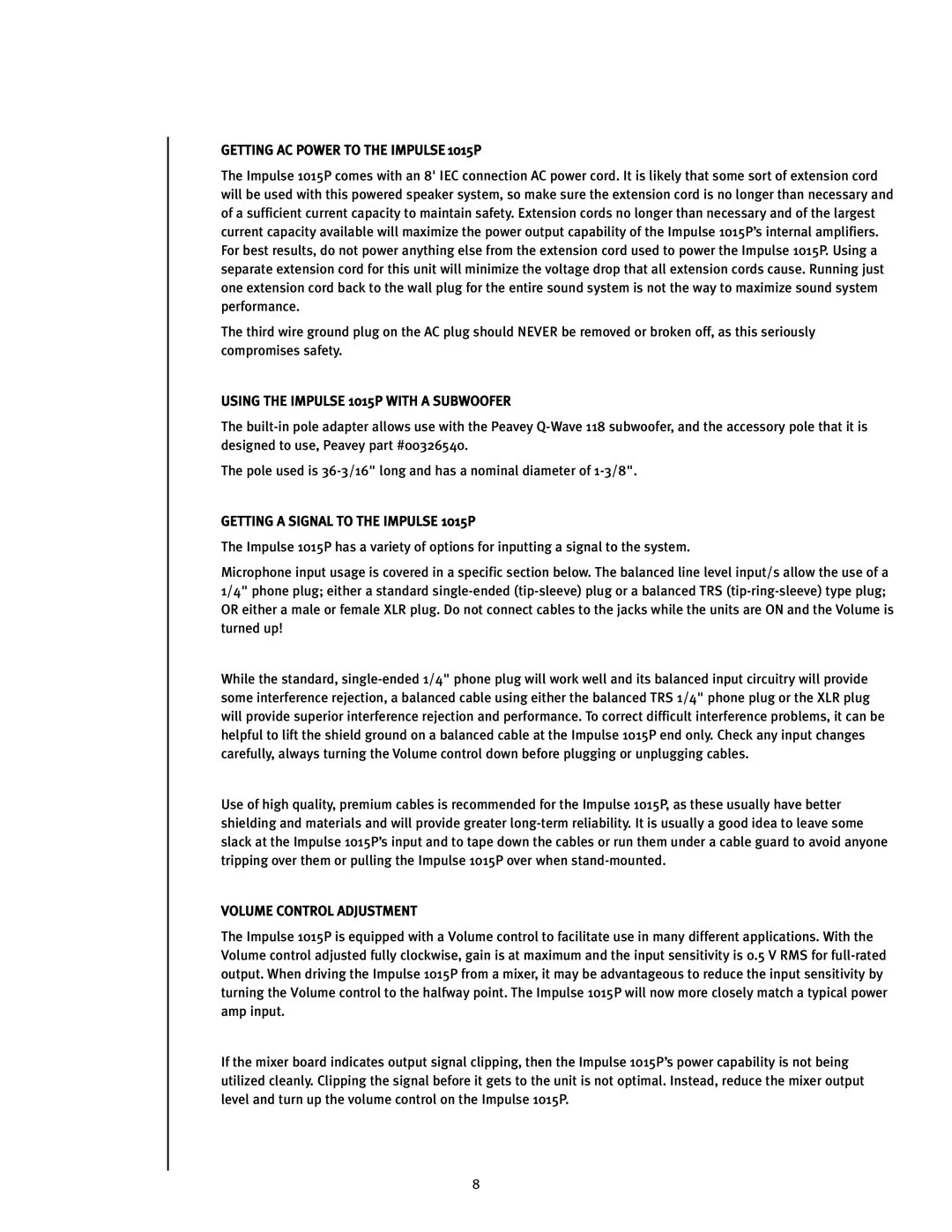GETTING AC POWER TO THE IMPULSE 1015P
The Impulse 1015P comes with an 8' IEC connection AC power cord. It is likely that some sort of extension cord will be used with this powered speaker system, so make sure the extension cord is no longer than necessary and of a sufficient current capacity to maintain safety. Extension cords no longer than necessary and of the largest current capacity available will maximize the power output capability of the Impulse 1015P’s internal amplifiers. For best results, do not power anything else from the extension cord used to power the Impulse 1015P. Using a separate extension cord for this unit will minimize the voltage drop that all extension cords cause. Running just one extension cord back to the wall plug for the entire sound system is not the way to maximize sound system performance.
The third wire ground plug on the AC plug should NEVER be removed or broken off, as this seriously compromises safety.
USING THE IMPULSE 1015P WITH A SUBWOOFER
The
The pole used is
GETTING A SIGNAL TO THE IMPULSE 1015P
The Impulse 1015P has a variety of options for inputting a signal to the system.
Microphone input usage is covered in a specific section below. The balanced line level input/s allow the use of a 1/4" phone plug; either a standard
While the standard,
Use of high quality, premium cables is recommended for the Impulse 1015P, as these usually have better shielding and materials and will provide greater
VOLUME CONTROL ADJUSTMENT
The Impulse 1015P is equipped with a Volume control to facilitate use in many different applications. With the Volume control adjusted fully clockwise, gain is at maximum and the input sensitivity is 0.5 V RMS for
If the mixer board indicates output signal clipping, then the Impulse 1015P’s power capability is not being utilized cleanly. Clipping the signal before it gets to the unit is not optimal. Instead, reduce the mixer output level and turn up the volume control on the Impulse 1015P.
8
